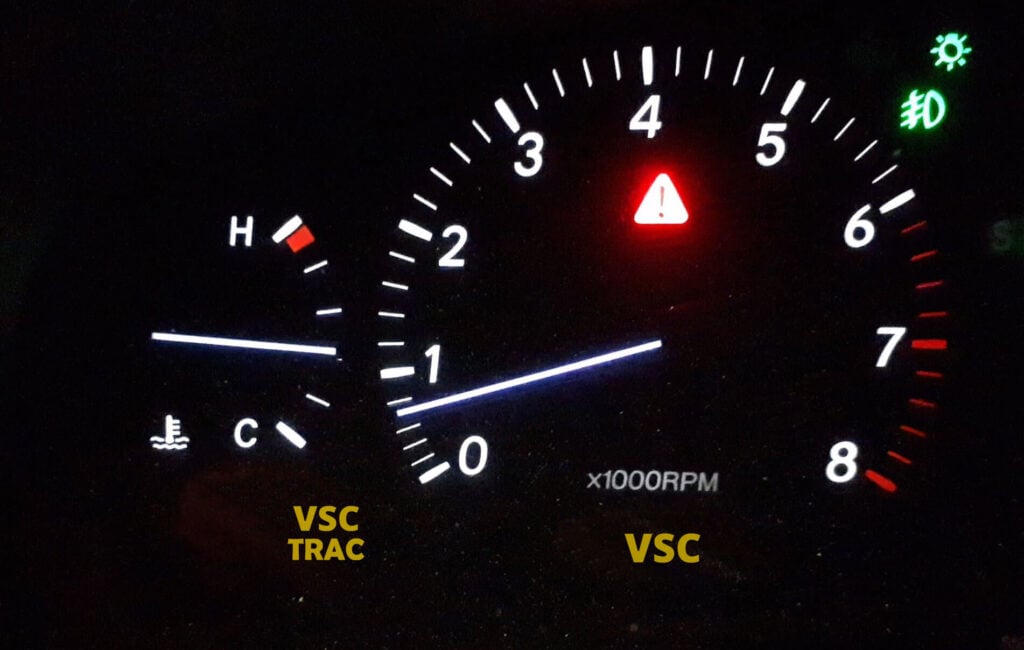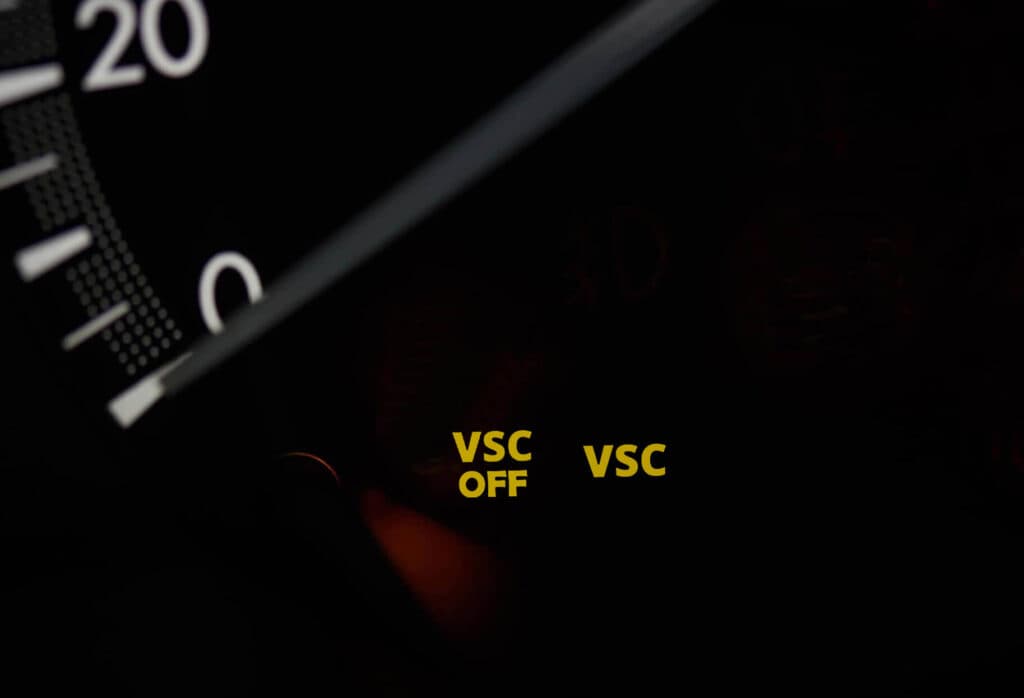Setting the Wheels Straight on Vehicle Stability Control
Navigating modern roads involves more than just good driving skills; it also requires your vehicle’s stability control systems to be in top shape. Understanding these systems and their warning lights is a key part of ensuring a safer driving experience. In this guide, we dive into the nuances of Vehicle Stability Control (VSC), its lights, and what actions you should take if they light up on your dashboard.
What’s On Your Dashboard? Decoding the Check Vehicle Stability Control Light
When you’re cruising down the highway or navigating through city streets, the last thing you want to see is a warning light pop up on your dashboard. It’s almost like your car is whispering, “Houston, we have a problem.” Among these alerts, the “Check Vehicle Stability Control System” light holds a unique level of importance. This light acts as a vigilant guardian of your driving experience, giving you a heads-up that something might be off with your Vehicle Stability Control (VSC) system.
The VSC system is your vehicle’s inbuilt safety mechanism designed to help you maintain control, particularly during less-than-ideal driving conditions. It monitors your steering and braking actions, intervening when it detects loss of traction or control. So, when the VSC warning light comes on, you’re essentially being told that this safety feature may not be functioning at its best.
The reasons for the light to illuminate can vary greatly. It could be something as benign as a temporary calibration error. Often, modern vehicles are riddled with sophisticated sensors and electronics that can sometimes misinterpret conditions or face minor glitches. If you’re lucky, a simple engine restart might do the trick. To do this, pull over to a safe location, turn off your engine for a minute, and then restart it. If the warning light disappears, you can let out that sigh of relief.

However, if the light persists after you’ve restarted your vehicle, it’s a sign you should take seriously. Your owner’s manual should be the first reference point in this situation. This handbook provides a model-specific explanation of the warning light and the recommended course of action. Typically, the advice will lean towards professional consultation for diagnostics and repairs.
Remember, ignoring this light is not an option. The VSC system is integral to your vehicle’s overall safety and performance, especially in treacherous conditions like wet or icy roads. Driving with a malfunctioning VSC system could mean you’re driving a vehicle that won’t assist you in maintaining control in an emergency situation. Consequently, if that light stays on, your next destination should be a mechanic’s shop for a thorough inspection and possible repair.
The Root of the Light: What Causes the Stability Control Light to Come On
• Sensors and ECU Relationship: Your car’s Electronic Control Unit (ECU) and various sensors monitor several elements like wheel speed, steering angle, and throttle position to keep your car on the straight and narrow.
• External Factors: Conditions like slippery roads due to rain, snow, or ice can affect your vehicle’s stability, triggering the light as a warning.
• Brake Fluid Levels: Insufficient brake fluid can affect the stability control system and cause the light to turn on. Make sure your brake fluid levels are adequate and meet your vehicle’s specifications.
• Wheel Speed Sensors: These sensors gauge the rotational speed of each wheel. If one is faulty or inconsistent, the stability control system may act up, turning on the warning light.
• Faulty ECU: Rare but serious, a malfunctioning ECU can send false warnings or fail to send critical ones, affecting not just the stability control but other systems too.
Location, Location, Location: Where to Find the Stability Control Sensor
Imagine your car as a high-tech fortress. The stability control sensor is akin to the control room where all the vital operations are monitored. As you can guess, the placement of this control room is critical. Typically located near your vehicle’s center of gravity, this sensor plays an indispensable role in keeping your driving experience as smooth as possible. You’ll commonly find it tucked away discreetly either under the front seats or within the center console.
The sensor is responsible for observing a variety of vehicle metrics, from lateral forces during a sharp turn to vertical forces when you’re going over bumps or inclines. Its prime location enables it to read these forces accurately, allowing your vehicle to make split-second adjustments to maintain stability. So why is it crucial for you to know where this sensor is located? Well, there are a few good reasons.
Firstly, if you are ever faced with an illuminated stability control warning light, knowing the sensor’s location can be handy for troubleshooting. Sometimes, something as simple as debris or a loose connection can trigger the alert. Secondly, when you take your car to the mechanic for diagnostics, your familiarity with the sensor’s location can expedite the process. It saves time for everyone involved when you don’t have to go through the entire vehicle searching for it. Lastly, in some cases, you might need to plug in a diagnostic tool yourself, and knowing the sensor’s exact location can make this task considerably more straightforward.
Traction vs. Stability: Know the Difference for Better Control
Traction control and stability control—two systems often mistaken for one another but serve distinct purposes in your vehicle. Think of them like the superhero duo of your car. While one might be great for brute strength, the other excels in agility and finesse.
Traction control’s primary function is to prevent wheel spin when you’re accelerating. Ever felt your tires lose grip and spin fruitlessly when you’re trying to speed up, especially on wet or slippery roads? That’s where traction control swoops in like a guardian angel, redistributing power to the wheels that have the most grip, allowing you to accelerate smoothly.
On the other hand, stability control is your go-to system for maintaining control over the entire vehicle, particularly when you’re navigating tricky turns or treacherous road conditions. This system works to correct instances of oversteering (when your car turns more than you intended) or understeering (when your car doesn’t turn as much as you want it to). Stability control accomplishes this by selectively applying brakes to individual wheels or altering the engine’s power output.
But how do you know which system might be in trouble when a warning light appears on your dashboard? The corresponding lights for these systems are usually different, designed to guide you towards identifying the specific issue. Traction control lights often appear as a car with squiggly tire trails, whereas stability control lights could display as a car following a curved path. Knowing these symbols and the key functions of each system prepares you to diagnose and react more effectively when something does go wrong.

Switching Gears: What Happens When You Turn Off Traction and Stability Control
• Increased Wheel Slip: Turning off these systems may help you when stuck in snow, as more wheel slip could help you gain the traction you need to escape.
• Risk of Skidding: With the systems off, your vehicle is more susceptible to skidding, particularly on slippery or curved roads.
• Loss of Vehicle Control: The systems are designed to assist in maintaining control of your vehicle. Disabling them takes away this safety net.
• Potential Tire Damage: Continuous wheel spinning could lead to tire damage, including faster wear and tear.
• Legal Implications: In some jurisdictions, it may be illegal to disable these critical safety systems, especially on public roads.
Mechanic’s Corner: Potential Repairs and Cost Breakdown for Stability Control Issues
• Sensor Replacement: If a sensor is the culprit, expect to shell out around $50 to $200 for a new one, not including labor costs.
• ECU Repairs: If the electronic control unit is faulty, repairs can range from $200 to $500 depending on the make and model of your vehicle.
• Brake Fluid Adjustment: A simple brake fluid top-off or system bleed could set you back between $80 and $120, depending on your location and mechanic rates.
• Diagnostic Fees: Before any repairs are done, diagnostic tests are usually run to identify the issue, adding approximately $100 to $200 to the total cost.
• Electronic Stability Control Light Fault: Addressing this could necessitate specialized diagnostic equipment and software updates, potentially increasing repair costs.
Remember, these are just estimates; the actual costs can vary based on your vehicle’s make and model, and the rates charged by the mechanic.
Steering Through Uncertainty — Your Roadmap to Stability Control Mastery
Understanding the intricacies of your vehicle’s stability control system puts you in the driver’s seat of your own safety. With this knowledge, you’re well-equipped to navigate the curves and straightaways of modern driving. For those in Canada facing stability control issues and looking for quick, efficient solutions, Uchanics offers mobile mechanic services that bring expertise right to your doorstep.
Feel free to check out Uchanics for more information or to book an appointment for your vehicle’s needs.
